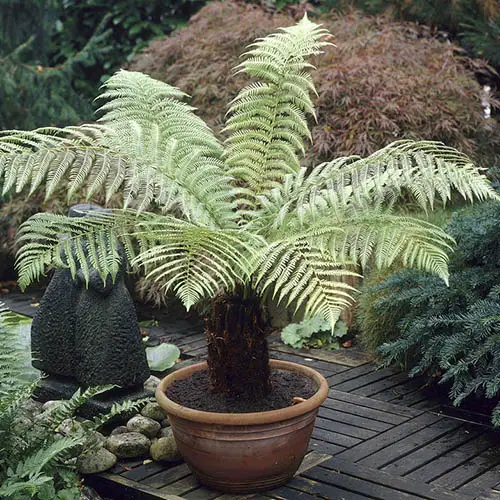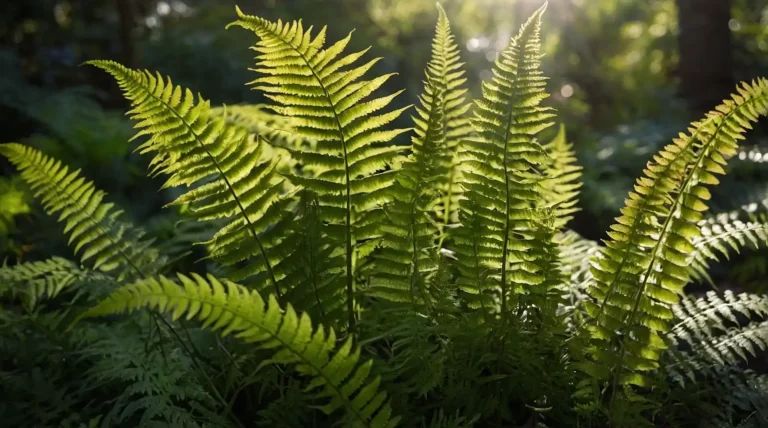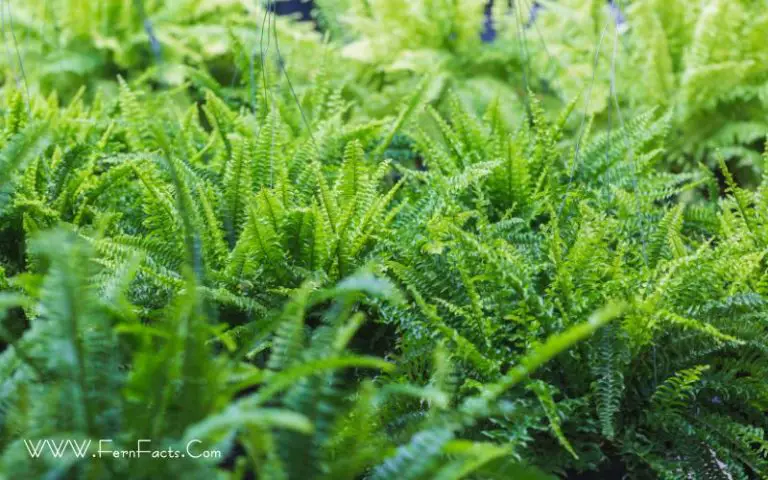Soft Tree Fern (Dicksonia Antarctica): Full Care Guide
Soft Tree Ferns (Dicksonia antarctica) are the evergreen fern plants that are the most demandable fern species for home cultivation among all gardeners.
If you want to grow these tree ferns in your yard, then do not hesitate. In this article, I will share my personal learning about these fern species while giving a general description of these species.
And so I will talk about their proper care and maintenance so that you will get ideas on what you should do and what not.
Furthermore, I will provide my own personal trips and tricks to make your plants thrive in your garden. So let’s explore these tree fern species.
Soft Tree Fern (Dicksonia Antarctica) Overview

Soft Tree Fern also known as man fern, Australian tree fern, wooly tree fern. Their botanical name is Dicksonia antarctica.
Similar to other fern plants, they don’t have flowers or any kind of seeds in them, instead, they produce spores and propagate themselves from each spore. Also, these ferns don’t produce any fragrance.
These fern plants have thick features like a thick erect trunk which covers their body with wool-type fibers. These fern plants are mostly native to Eastern Australia, Southeast Queensland, South Wales, and Tasmania.
These Soft Tree ferns can grow up to 20 m or 49 feet in height. However, their general or average height is about 4.5 to 5 meters. In the cultivated lands, their height does not extend up to 15 meters.
This fern can even produce spores at the age of 20 as well. Each year these ferns grow around 3.5 to 5 cm which is why their growing is a lengthy process or slow process.
These species are very hairy at their base with large dark green fronds. They also look like giant fern trees or plants that are based on their trunk.
This fern generally grows in a damp environment with sheltered places like woodlands, slopes, and cloud forests. Similarly, these plants need a semi-shaded or half-sheltered place to grow properly.
These fern cannot resist themselves in drought or dry soil, rather they require moisture and dampness in their soil.
Care Requirements
Like all the fern plants, these soft Tree plants will also require a little minimal care to grow and thrive in nature.
Light and Temperature
Soft Tree ferns need partial light in semi-shaded places or fully shaded places with a damp environment and atmosphere. They are intolerable under full sun exposure. As they do not require direct sunlight, so try to avoid planting where they have a high chance of getting full sun exposure.
It can burn out their fronds or make their soil more dry. Besides, they will get more vulnerable if the sun temperature rises above 95°F or 35°C.
In the recent heatwave in 2023, lots of researchers have found that these plants need constant water on a daily basis to survive through the heat.
Watering and Humidity Needs
To grow healthy, lively plants in your garden, you need to maintain their watering techniques so that you don’t put much or less water on them.
Pouring excessive water might lead your plants to mushy and rotten roots. On the contrary, pouring less water might dry out their roots and soil. As a result, your plants might die. In such cases, you need to balance the moisture level in their pots.
You can give them water twice a week. However, you need to recheck the moist level before pouring the water. As fern plants thrive in wet and humid conditions, therefore you need to water them.
In this way, their trunk will balance the humid level throughout all the roots and fronds. You can also give them a good soaking process so that their trunk of roots get an equal level of hydration.
You need to water the base of the trunk so that roots can grow and extend under the soil and ground. Similarly, you have a humid atmosphere, not a very cold one.
In summertime, you can spray their trunk and base, or their fronds to keep them hydrated. Similarly, you can also use a humidifier to maintain the moisture and dampness in the environment.
Soil and Fertilization
In order to make your soft tree ferns soil, you need to be very careful. You can mix their soil with acid, neutral, alkaline soils.
You can also grow your fern in the pot but you need to choose a larger pot like 4 feet where they can get enough space to spread. As they have large trunks, they require maximum places to flourish.
As they grow very large in size, that’s why growing them in pots sometimes becomes very challenging for you. Because it will be very difficult for you to move your plants or shift them anywhere.
Regarding their fertilization process, you can use market product fertilizer which is called tree fern feed.
You can mix the fertilizer and give it to different growing seasons especially, in the mid-spring and mid-summer seasons. Thus, all these rich components in the soil will help your ferns to enhance and bloom in every season.
Common Issue and Solution
Like all other fern plants, these soft tree ferns are also contagious to some diseases and pests. This fern can be attacked by pests, insects, spider mites, and bugs.
Similarly, they can also get fungal diseases from any fungi. Therefore, you need to do regular checking. If you see any bugs and insects around your plants, you have to use pest control.
Likewise, any fungal disease needs proper medical treatment and care. Therefore, you can use insecticidal soap, oil, or any medicine that can reduce their diseases.
Sometimes, overwatering can be one of the reasons your plants get attacked by these pests or fungi. Because excessive water can decay their roots.
And so, those mushy rotten roots might get attacked by any fungus or insects. In this case, you need to maintain the proper drainage system of your plants so that excessive water can be drained out properly.
Personal Tips and Tricks
Being a plant lover, I have learned so much while gardening in my garden. Sometimes I have failed to protect my plants because of my inappropriate maintenance while sometimes I have gained confidence while seeing my plants blooming in the atmosphere.
Therefore, I do not want you to make the same mistakes that I have made previously while planting my soft tree ferns. Let’s see what else you can do to maintain your fern plants.
Explore Further on Caring for and Cultivating Blue Star Fern.
Grooming and Maintenance
After planting your fern, you need to do scheduled-based grooming so that it keeps in a structured shape.
You need to cut down their brown spot fronds, any damaged fronds, and dead fronds by pruning. This pruning will give you plants healthy growth to thrive. Keep in mind that you should not cut their trunk more than 6 inches because you might affect their roots.
So you have to do it with a cautious mind. And so, you can also put mulching on the top of their soil. This will maintain the moisture level in the soil which will reduce the solid dryness or drought situation.
Cold Weather or Winter Protection
Although they can tolerate the cold weather, too much cold weather might be intolerable for some time.
If your plants are on top of any container then you must shift them inside of your house or any warmer place in your house.
Regarding the grounded tree ferns, the best you can do is put a handful of straw around your plant or you can use burlap around your plants. In this way, you can protect your plant’s fronds from the cold environment.
Final Takeaway
In the final thought process, planting soft tree ferns in your garden can flourish your garden’s overall look.
However, these fern species plants require some care and maintenance like ideal light and temperature conditions, the right watering techniques, and humidity along with soil fertilization to grow.
Nonetheless, like all other plants, these fern species are also affected by pests and fungi. Thus, by following all the steps you can grow and maintain soft tree plants in your garden.







